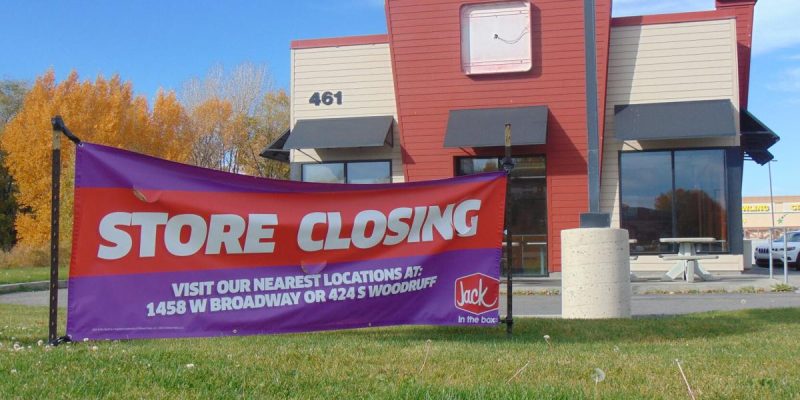Jack in the Box Closing: Understanding the Reasons Behind Store Closures

Jack in the Box, one of America’s most iconic fast-food chains, has been a staple for burgers, tacos, and late-night cravings for decades. However, reports of Jack in the Box closing have sparked concern among loyal customers. Why are some stores shutting down, and what does this mean for the future of the brand?
This article takes a deep dive into the reasons behind these closures, the challenges faced by Jack in the Box, and the potential strategies the company is adopting to navigate these changes.
Reasons for Jack in the Box Closures
Several factors contribute to the closure of Jack in the Box locations, ranging from financial pressures to operational challenges.
Declining Sales at Certain Locations
- Low Performance: Not all Jack in the Box outlets perform equally. Underperforming locations often face closure to minimize losses.
- Regional Challenges: In some areas, the demand for Jack in the Box may not be strong enough to sustain operations.
Rising Operational Costs
- Labor Costs: Increased wages and benefits requirements have significantly raised operating expenses for fast-food chains.
- Inflation: Higher costs for ingredients, transportation, and utilities have squeezed profit margins.
Increased Competition
- Fast-Food Market Saturation: The fast-food industry is highly competitive, with major players like McDonald’s, Burger King, and Wendy’s vying for market share.
- Emerging Trends: Health-conscious consumers are gravitating toward newer fast-casual brands offering fresh and organic options, creating a shift in customer preferences.
Franchisee Issues
- Franchise Disputes: Disagreements between the corporate office and franchise owners over fees, support, or operational guidelines have led some franchisees to close their stores.
- Lack of Investment: Some franchisees may lack the capital to upgrade their stores or meet corporate requirements, resulting in closures.
Real Estate Challenges
- High Rent Costs: Locations in high-demand areas often face rent hikes, making them unprofitable to operate.
- Shift in Foot Traffic: Changes in neighborhood demographics or reduced traffic in certain areas can also lead to closures.
Impact of Jack in the Box Closures
The closure of Jack in the Box locations has various implications for both customers and the company itself.
For Customers
- Reduced Accessibility: Loyal customers in affected areas may need to travel farther to find a Jack in the Box location.
- Loss of Familiarity: For many, the closure of a favorite fast-food spot can feel like losing a part of their routine.
For Employees
- Job Losses: Store closures often result in layoffs, affecting employees’ livelihoods.
- Redeployment Options: In some cases, employees may be offered positions at nearby locations.
For the Brand
- Reputation Risks: Frequent closures can create the perception that the company is struggling, potentially affecting customer confidence.
- Focus on Efficiency: Consolidating operations allows Jack in the Box to focus on more profitable locations and long-term growth strategies.
Jack in the Box’s Response to Challenges
Despite closures, Jack in the Box is taking proactive steps to address these challenges and adapt to a changing market.
Strategic Restructuring
- Closing Underperforming Locations: By shutting down low-performing stores, the company can allocate resources to stronger markets.
- Franchise-Focused Model: Encouraging franchise ownership helps reduce corporate overhead costs.
Menu Innovation
- Introducing New Items: Jack in the Box continues to experiment with innovative menu offerings to attract new customers.
- Healthier Options: Incorporating lighter, healthier items to appeal to health-conscious consumers.
Investment in Technology
- Digital Ordering: Expanding mobile apps and digital kiosks to streamline the ordering process and improve customer experience.
- Delivery Partnerships: Strengthening partnerships with delivery platforms like DoorDash and Uber Eats to reach more customers.
Brand Revitalization
- Store Remodels: Modernizing store designs to enhance the dining experience.
- Marketing Campaigns: Leveraging humor and nostalgia in advertising to reconnect with customers.
Conclusion
While reports of Jack in the Box closures may raise concerns, it’s important to understand the broader context. These closures are part of a strategic effort to address challenges like rising costs, competition, and changing consumer preferences.
By focusing on innovation, technology, and efficient operations, Jack in the Box aims to strengthen its position and ensure long-term success. For loyal customers, the brand remains committed to delivering the same quality and flavor that has made it an enduring favorite.
Want to stay updated on Jack in the Box news? Follow their official website and social media channels for the latest announcements!
FAQs
1. Why are Jack in the Box locations closing?
Closures are due to a combination of declining sales, high operational costs, increased competition, and franchise disputes.
2. Are all Jack in the Box locations closing?
No, closures are limited to underperforming or unprofitable locations. Many locations continue to thrive.
3. How is Jack in the Box addressing these challenges?
The company is focusing on restructuring, menu innovation, digital transformation, and enhancing customer experiences.
4. Will new locations open in the future?
Yes, Jack in the Box plans to expand into new markets where demand is strong and operational costs are manageable.
5. How can customers find the nearest Jack in the Box location?
Customers can use the official website or mobile app to find open locations and access delivery options.
Also read: How Jalen brunson stats vs 76ers Show His Rising Star Power











